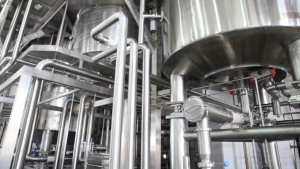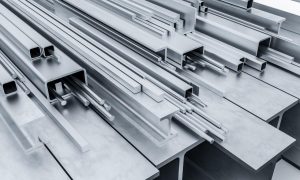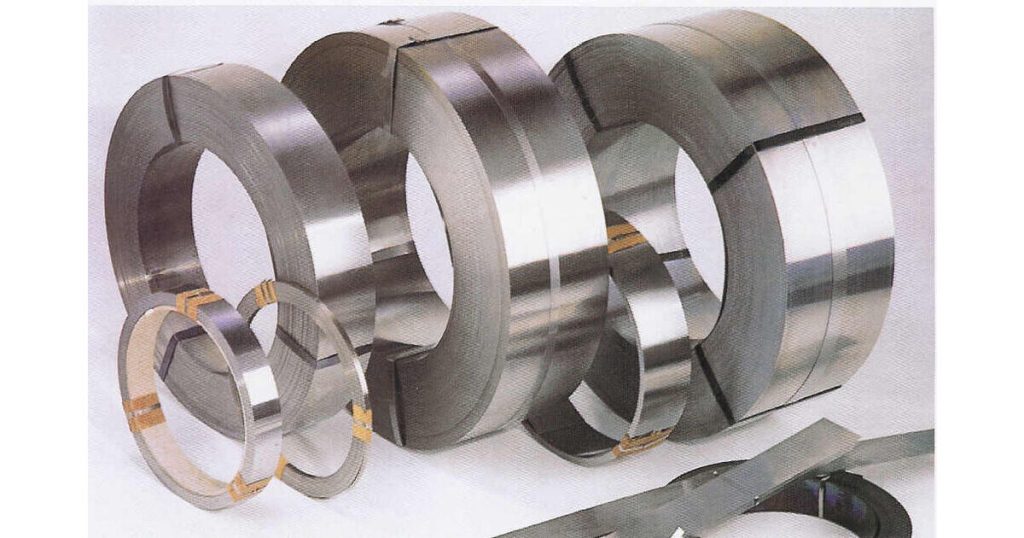What Is Stainless Steel Stripping?
Stainless steel stripping refers to narrow, flat sections of stainless steel that are typically coiled and cut to width from larger coils or sheets. These strips are available in a variety of thicknesses, widths, and surface finishes, depending on their intended commercial use. The primary characteristics that make stainless steel strip an ideal choice for many industries include its corrosion resistance, high strength-to-weight ratio, thermal stability, and aesthetic appeal.
Key Grades of Stainless Steel Used in Stripping
304 Stainless Steel Strip
The most commonly used grade, 304 stainless steel, offers a balanced composition of chromium and nickel, providing excellent corrosion resistance and forming properties. It is ideal for kitchen equipment, automotive trims, and architectural applications.
316 Stainless Steel Strip
Known for its superior resistance to chloride-induced corrosion, 316 grade is used in more aggressive environments, such as marine, chemical processing, and pharmaceutical industries. It also qualifies as a food grade stainless steel, making it a preferred choice for commercial kitchens and food production lines where hygiene and corrosion resistance are paramount.
430 Stainless Steel Strip
A ferritic, non-hardenable grade, 430 is magnetic and features good corrosion resistance and formability. It is widely used in decorative trim, appliances, and fuel burner components.
Applications of Stainless Steel Strips in Commercial Use

Stainless steel strips are used in virtually every industrial sector due to their durability and versatility. Common applications include:
-
Automotive Industry: Used in exhaust systems, trims, and heat shields due to their heat resistance and strength.
-
Construction Sector: Used for cladding, structural supports, roofing, and drainage systems.
-
Electronics: Fine strips are utilized in battery connectors, springs, and EMI shielding.
-
Food and Beverage: Ideal for conveyors, blades, mixing tanks, and containers, thanks to their food grade stainless steel properties that resist bacteria and contamination.
-
Medical Field: Strips are employed in surgical tools, equipment housing, and implants for their non-reactive and biocompatible nature.
Surface Finishes and Customization Options
Common Surface Finishes
-
2B Finish: A smooth, dull finish that is widely used for general applications.
-
BA (Bright Annealed): Highly reflective and used for decorative applications.
-
No. 4 Finish: Brushed finish used in architecture and appliances.
-
Mirror Finish: Polished to a reflective surface, ideal for decorative trims and reflective parts.
Customization Options
Buyers can request:
-
Specific tensile strength
-
Custom widths and thicknesses
-
Pre-cut lengths
-
Specific edge conditioning (deburring, rounded edges, etc.)
-
Surface treatments like coating or passivation
Coil vs. Cut Length: What’s Best for Your Application?
Buyers must decide between purchasing stainless steel strips in coil form or cut-to-length pieces. Coiled strips are ideal for continuous manufacturing processes, reducing downtime and waste. On the other hand, cut-to-length strips are more suitable for precision applications where consistency is key.
Factors to Consider When Buying Stainless Steel Strips

1. Material Certification
Always request Mill Test Reports (MTRs) to verify material composition, mechanical properties, and compliance with standards like ASTM, AISI, or EN.
2. Tolerance Requirements
Understand the dimensional tolerance levels that your industry or application demands. Tighter tolerances often cost more but ensure higher quality and consistency.
3. Corrosion Resistance Needs
Different environments call for different grades. Marine, chemical, food production, and outdoor applications typically require high-resistance grades like 316 food grade stainless steel or duplex stainless steels.
4. Mechanical Properties
Depending on the application, you might need high yield strength, tensile strength, or ductility. Ensure the selected grade and temper match your needs.
5. Supplier Reputation and Logistics
Partnering with a reputable supplier ensures material traceability, timely delivery, and consistent quality. Evaluate their logistics capabilities, especially if bulk or international shipping is involved.
Benefits of Stainless Steel Stripping in Industrial Applications
Corrosion and Heat Resistance
Stainless steel strips perform exceptionally well under harsh environmental and operational conditions, minimizing downtime and replacement costs.
Strength and Durability
Their high tensile strength makes them ideal for load-bearing and structural applications.
Formability and Machinability
Easily fabricated into various forms, stainless steel strips accommodate cutting, welding, bending, and stamping.
Hygienic and Sanitary Properties
Especially with food grade stainless steel, these strips are highly resistant to bacterial growth, rust, and chemical contamination, making them the preferred choice for food contact surfaces, dairy equipment, breweries, and kitchen installations.
Environmental and Economic Advantages
Stainless steel is 100% recyclable, and most manufacturers use a significant percentage of recycled content in their production. Its long lifespan and minimal maintenance requirements result in a lower total cost of ownership (TCO) over time, especially when compared to carbon steel or coated alternatives.
Common Standards and Compliance Certifications
Ensure the stainless steel strips meet the following standards:
-
ASTM A240 / A480 (U.S.)
-
EN 10088-2 (Europe)
-
JIS G4305 (Japan)
-
RoHS and REACH compliance for environmental safety
-
NSF and FDA compliance for food grade stainless steel applications
How to Store and Handle Stainless Steel Strips
Improper storage can lead to surface damage, rusting, or contamination. Follow these best practices:
-
Store in dry, covered areas with minimal humidity.
-
Avoid contact with carbon steel or other contaminants.
-
Use non-abrasive tools when handling to preserve surface finish.
-
Rotate stock using the first-in-first-out (FIFO) principle to reduce aging-related degradation.
Conclusion: Making the Right Choice for Your Business
Stainless steel stripping is a crucial material for high-performance, long-lasting industrial applications. By understanding the various grades, finishes, applications, and purchasing criteriaincluding the importance of food grade stainless steel for hygienic industries—commercial buyers can make data-driven, cost-effective decisions that meet both technical requirements and budget constraints.
Whether you’re in automotive manufacturing, food production, construction, or any precision industry, investing in the right stainless steel strip ensures enhanced performance, regulatory compliance, and long-term value.



